Discrimination in the workplace can damage morale, hinder career growth, and violate your legal rights. Yet many employees are unsure of what discrimination looks like, mainly when it manifests in subtle, everyday interactions. Employers are legally obligated to treat all employees fairly and equitably. Still, when that doesn’t happen, it’s essential to understand your options.
A workplace discrimination attorney can help employees who’ve faced unlawful treatment understand their rights and take strategic legal action. Whether you’ve experienced mistreatment based on race, gender, age, disability, or another protected trait, this blog will help you recognize the signs of discrimination, explain what to do next, and show you where to report discrimination in the workplace when needed.

Understanding Discrimination in the Workplace
Discrimination in the workplace occurs when an employer takes adverse action or treats someone differently due to characteristics that are protected under state or federal law. The U.S. Equal Employment Opportunity Commission (EEOC) explains that protected classes include race, color, national origin, religion, sex (including sexual orientation and gender identity), age (40 and over), disability, and genetic information.
This protection extends beyond hiring and firing decisions. Discrimination can impact virtually every aspect of employment, including promotions, work assignments, compensation, benefits, and even performance evaluations. If your employer consistently singles you out or denies you opportunities while treating others with similar qualifications more favorably, you may be experiencing workplace discrimination.
It’s important to note that both intentional discrimination (disparate treatment) and unintentional discrimination (disparate impact) can be grounds for legal action. For example, a seemingly neutral policy that disproportionately affects a specific demographic group—such as English-only rules in a multilingual environment—can still be unlawful if it disadvantages employees based on national origin.
Common Signs of Discrimination in the Workplace
Many workers expect discrimination to be loud and obvious, but it’s often far more subtle. Below are some common workplace discrimination examples to watch out for.
1. Unfair Treatment Based on Protected Status
You might be facing discrimination if you’re being treated differently from others in your role or department without a valid business reason. This could include:
- Being denied training, mentorship, or development opportunities
- Routinely passed over for promotions while less qualified colleagues advance.
- Given negative performance evaluations that don’t match your actual contributions
These disparities often occur across job ads, hiring, onboarding, disciplinary practices, and workplace policies, sometimes under the guise of “company culture” or “fit.”
Employers cannot rely on subjective reasoning to justify discriminatory decisions. Patterns of favoritism, exclusion, or punishment that align with your protected characteristics should raise red flags.
2. Hostile Work Environment and Harassment
Harassment is one of the most recognizable forms of discrimination, and it can range from offhand remarks to serious threats. Harassment becomes illegal when it is so frequent or severe that it creates a hostile work environment, or when enduring the harassment becomes a condition of continued employment.
- Derogatory comments or slurs
- Offensive jokes or gestures related to your identity
- Repeated unwanted physical contact or intimidation
- Displaying racist, sexist, or otherwise inappropriate material in the workplace
Even if your harasser is a coworker (rather than a manager), your employer can still be held accountable for failing to intervene or address the behavior promptly. Don’t wait until the situation escalates—report it internally and document your experiences as soon as possible.
3. Retaliation After Reporting Discrimination
One of the most damaging forms of workplace discrimination is retaliation—punitive actions taken against an employee for engaging in legally protected activity, such as:
- Reporting a supervisor’s discriminatory behavior
- Assisting a coworker with a complaint
- Requesting accommodations or legal leave
Retaliation can appear in many forms, including demotion, exclusion from projects, reduced hours, or being assigned undesirable shifts. This creates a chilling effect where employees are afraid to speak up, allowing discrimination to persist unchecked.
Importantly, retaliation is illegal even if the original complaint does not qualify as discrimination under the law, as long as it was made in good faith.
4. Unequal Pay, Discipline, or Work Assignments
Suppose employees with similar roles and experience levels are being paid differently, disciplined inconsistently, or assigned tasks based on protected traits. In that case, it may be a sign of discrimination. Examples include:
- Female employees consistently receive lower pay than their male counterparts.
- Older workers are passed over for new projects in favor of younger employees.
- Disabled employees are given fewer client-facing or leadership roles despite their qualifications.
Pay inequity is fundamental to track. If compensation discussions are discouraged or punished, this may also violate labor law protections regarding transparency and disclosure.
5. Subtle Bias, Microaggressions, and Exclusion
Some of the most damaging types of discrimination are the hardest to spot. Microaggressions—such as backhanded compliments, constant interruptions, or assumptions based on your identity—can accumulate over time to create a hostile work environment.
Other examples of subtle bias may include:
- Being regularly excluded from team meetings, social events, or informal decision-making
- Not being invited to professional development opportunities.
- Supervisors “forgetting” to include you in key communications or emails
The Federal Trade Commission highlights that systemic exclusion or favoritism—particularly when tied to personal characteristics—can rise to the level of unlawful discrimination.
Where to Report Discrimination in the Workplace
Knowing where to report discrimination in the workplace is critical if you want to protect your rights and build a solid case. Here are the appropriate channels to consider:
- Internal Reporting (HR or EEO Office): If your company has a Human Resources department, it’s generally best to start there. File a written complaint detailing the incidents and request a copy for your records. Follow up and document any response, or lack thereof.
- Equal Employment Opportunity Commission (EEOC): The federal agency responsible for enforcing employment discrimination laws. You can file a charge online, by mail, or in person at a local office.
- State Civil Rights Agencies: Many states offer additional protection, which often has broader definitions of protected classes and more extended filing deadlines.
- Office of Federal Contract Compliance Programs (OFCCP): If your employer is a federal contractor or subcontractor, you may also file with the OFCCP, which enforces equal opportunity laws in government-related workplaces.
- Workplace Discrimination Attorneys: When complaints are ignored—or retaliation occurs—legal representation is often the most effective way to take control of the situation. At Cantrell Schuette, we help employees build strong cases, protect their records, and pursue results.
What to Do If You Suspect Discrimination
If you’re unsure whether what you’re experiencing qualifies as unlawful discrimination, consider these first steps:
- Start Documenting: Write down every incident, including dates, times, witnesses, and the impact on your work. Keep any written communications that support your claim.
- Compare Treatment: Are others in your position being treated more favorably? Document inconsistencies that may show disparate treatment.
- File a Complaint Promptly: Most claims must be filed with the EEOC within 180 or 300 days. Delays can make it harder to prove your case.
- Speak with a Lawyer: A workplace discrimination attorney can help you determine whether you have a case and how to approach it. They can also help preserve evidence and manage deadlines.
Why Employees Trust Cantrell Schuette
At Cantrell Schuette, we believe no one should face discrimination at work, especially alone. Our attorneys understand the emotional, professional, and legal toll that unfair treatment can take, and we’re here to help. We guide you through every step of navigating workplace discrimination.
We offer:
- Strategic evaluation of your claims and supporting documentation
- Representation in EEOC and state-level investigations
- Guidance on internal HR complaints and appeals
- Litigation support if a case progresses to court
Visit our Employment Litigation page to learn how we advocate for employees and fight for fairness in the workplace.
FAQ: Discrimination in the Workplace
Q: What qualifies as discrimination under the law?
A: Discrimination occurs when an employee is mistreated based on a protected characteristic, such as race, gender, age, disability, or religion. The treatment must have a material impact on the employee’s job status, benefits, or work environment.
Q: I reported discrimination, but now I’m being punished. What can I do?
A: Retaliation for reporting discrimination is illegal. If you’ve experienced negative consequences—like reduced hours or job loss—after filing a complaint, speak to a workplace discrimination attorney right away.
Q: Is exclusion from meetings or projects considered discrimination?
A: Yes, if the exclusion is based on your protected status and negatively affects your opportunities for advancement, it may constitute subtle discrimination or disparate treatment.
Q: How long do I have to file a complaint with the EEOC?
A: Generally, you must file within 180 days of the last discriminatory act. However, in some states with their own human rights agencies, the deadline may be extended to 300 days.
Take the First Step Toward Justice
Discrimination in the workplace can undermine your confidence, stall your career, and leave you questioning your worth. Whether you’ve been unfairly treated, harassed, retaliated against, or excluded from opportunities, you don’t have to tolerate it—and you don’t have to face it alone.
At Cantrell Schuette, we take your concerns seriously. Our experienced employment attorneys are here to listen, evaluate your situation, and help you take the proper legal steps. From filing with the EEOC to pursuing litigation when needed, we’ll stand by your side and fight for fair treatment.
You deserve a workplace that respects your rights.
Let Cantrell Schuette help you move forward with strength and clarity.




